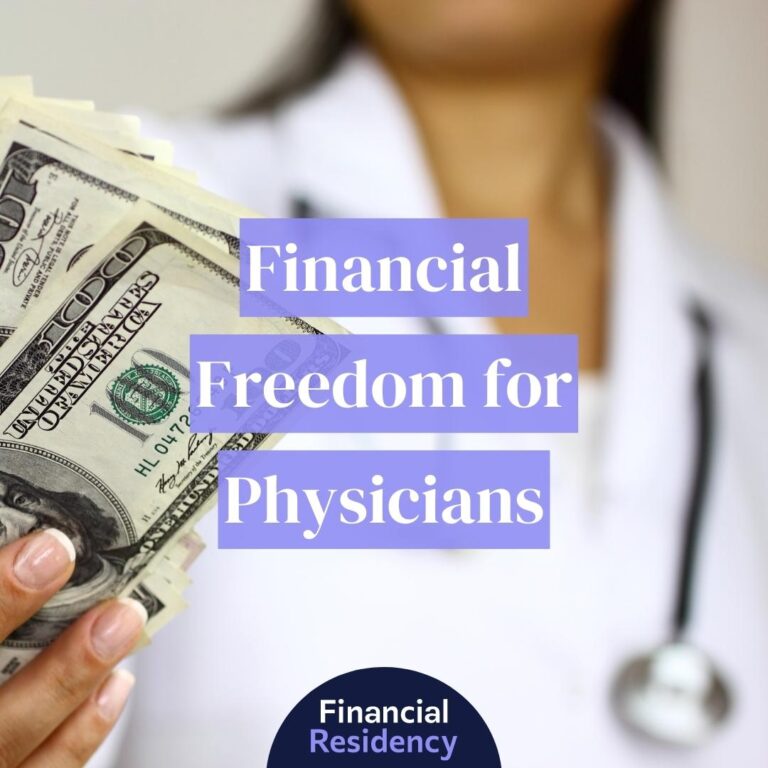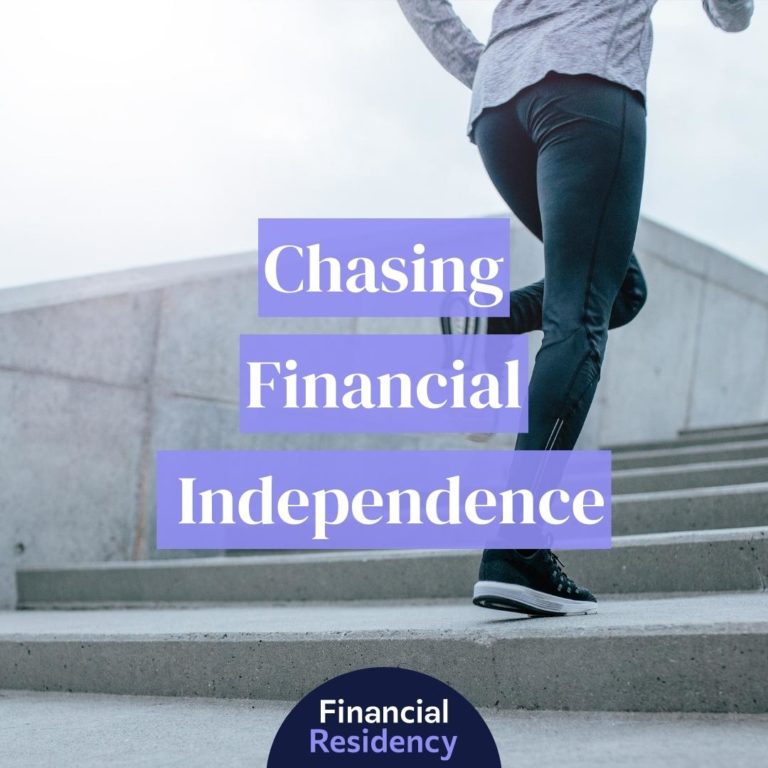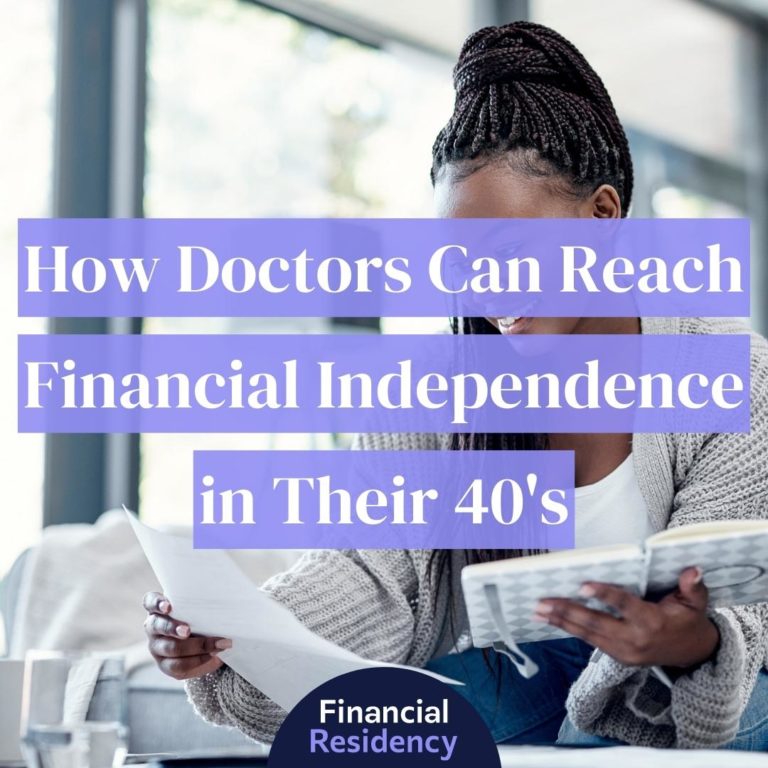If early retirement is on your mind, you may know about the FIRE movement. FIRE stands for Financial Independence, Retire Early. Followers of the movement pursue frugal living to retire well below traditional retirement age. The Fat FIRE movement takes the regular FIRE movement a step further.
It’s a more aggressive version of FIRE, suited to high-earning individuals who anticipate at least $100,000 in annual expenses after retirement.
This article will explore the Fat FIRE movement in more detail, so you understand exactly how it works.
How Fat FIRE Works
Fat FIRE is a variation of the FIRE movement that promotes financial independence (through) early retirement. But while a FIRE is all about living lean, FatFIRE is about abundance in retirement. It’s well-suited to affluent Americans who want to pursue a lavish lifestyle, with the ability to live in expensive parts of the country, frequently dine out, and travel first-class to exotic destinations.
To achieve this largesse, you’ll need to save far more money upfront for a Fat FIRE than you would for a “skinny” one. This means a high salary during your upfront working years and saving the bulk of your income to invest. This is to fund your substantial passive income during your retirement years.
Participants must focus on maximizing their earnings now and investing in a diversified portfolio. Many physicians who do Fat FIRE work full-time and also invest in real estate, among other assets, sometimes actively managing the property.
Types of FIRE Strategies
In addition to a regular FIRE or a Fat FIRE, there are many other types you can pursue:
- Barista FIRE
- Coast FIRE
- Lean FIRE
Let’s explain these FIRE types and how they compare to the Fat FIRE method.
Fat FIRE vs. Coast FIRE
A Coast Fire is similar to a Fat FIRE, but once you reach your investment goal you shift your savings and spending strategies to “coast” until you retire. After you reach your FIRE investment number, you can stop contributing to your retirement accounts (IRAs) or continue setting aside funds for an added optional cushion.
Fat FIRE vs. Barista FIRE
With the Barista FIRE approach, you keep working during retirement but switch to part-time work hours or another low-stress job altogether. The idea is you’ll be able to earn some money to help cover expenses and maintain or acquire group health insurance coverage.
Barista or coffee shop jobs can be a particularly good option for retirees. Many employers, like Starbucks, are known for offering excellent benefits and PTO for even part-time staff. Other part-time jobs, like airline customer service, provide unlimited free air travel. And as an added bonus, a part-time job can keep you socially connected, technologically current, and stave off everyday boredom and loneliness that often sets in after retirement.
Fat FIRE vs. Lean FIRE
The Lean FIRE approach is very similar to FatFIRE, but there’s a different lifestyle objective. Fat FIRE is about being able to live lavishly during retirement, whereas Lean FIRE emphasizes being a minimalist. This means you don’t have to save as much money to reach your retirement savings goal.
People who pursue the Lean FIRE method envision retirement very differently from Fat FIRE retirees. Instead of dining out in expensive restaurants and staying at the Ritz, Lean FIRE adherents are more likely to own a tiny house, grow their own food, and travel by camper van – or bicycle and bike trailer. Some may own a regular-size, suburban house and drive a four-door sedan. They’re just conscious of living minimally and acquiring fewer material goods.
How Much Money Does Fat FIRE Take?
Everyone’s number looks different, but many FatFIRE adherents suggest $5 million is a good number to assure that you can live comfortably off the interest and be able to absorb any shocks in the economy.
The amount of money you need for a Fat FIRE ultimately depends on the expenses you anticipate later in life, keeping in mind you need to plan for substantial medical costs during old age. Also, take into account the area where you’ll be living and how expensive it is.
How to Calculate Fat FIRE
If you’re looking to find an exact savings number, there is a simple, directional way to calculate your Fat FIRE number. It consists of estimating your average annual expenses during retirement and examining how much you’re currently saving now.
Many people use the x25 method where you multiply your expected total annual expenses by 25. This allows you to withdraw 4% a year from your total retirement savings without depleting your nest egg. This formula assumes investment growth of at least 4% a year — and that 4% will be a safe withdrawal rate.
Afterward, you’d need to calculate how long it will take you to reach the FatFIRE number. Here’s an example of how this could play out.
- You anticipate $100,000 a year in annual expenses after retirement. So 25 x $100,000 = $2.5 million you’ll need for a FatFIRE.
- You have $100,000 saved and you are saving roughly $100,000 a year.
- You need to save $2.4 million.
Assuming a 4% to 10% return on investment every year, this means you would need to work an additional 12 or 16 years to reach your Fat FIRE savings goal.
| Year | Starting Balance | Return 4% | Return 6% | Return 8% | Return 10% |
| 0 | $100,000.00 | $104,000.00 | $106,000.00 | $108,000.00 | $110,000.00 |
| 1 | $212,160.00 | $218,360.00 | $224,640.00 | $231,000.00 | |
| 2 | $324,646.40 | $337,461.60 | $350,611.20 | $364,100.00 | |
| 3 | $441,632.26 | $463,709.30 | $486,660.10 | $510,510.00 | |
| 4 | $563,297.55 | $597,531.85 | $633,592.90 | $671,561.00 | |
| 5 | $689,829.45 | $739,383.76 | $792,280.34 | $848,717.10 | |
| 6 | $821,422.63 | $889,746.79 | $963,662.76 | $1,043,588.81 | |
| 7 | $958,279.53 | $1,049,131.60 | $1,148,755.78 | $1,257,947.69 | |
| 8 | $1,100,610.71 | $1,218,079.49 | $1,348,656.25 | $1,493,742.46 | |
| 9 | $1,248,635.14 | $1,397,164.26 | $1,564,548.75 | $1,753,116.71 | |
| 10 | $1,402,580.55 | $1,586,994.12 | $1,797,712.65 | $2,038,428.38 | |
| 11 | $1,562,683.77 | $1,788,213.77 | $2,049,529.66 | $2,352,271.21 | |
| 12 | $1,729,191.12 | $2,001,506.59 | $2,321,492.03 | $2,697,498.34 | |
| 12 | $1,902,358.76 | $2,227,596.99 | $2,615,211.39 | ||
| 14 | $2,082,453.11 | $2,467,252.81 | |||
| 15 | $2,313,400.30 | ||||
| 16 | $2,558,204.32 |
Put another way, here are the two steps needed to reach your Fat FIRE number:
- Calculate your total anticipated annual expenses during retirement = $100,000
- Multiply that by 25. This is your Fat FIRE number = $2.5 million
Then figure out how many years away you are by:
- Looking at your total saved now for retirement = $100,000
- Calculate how much you can save each year – the more aggressive the better = $100,000
- Take your FatFIRE number and subtract how much you have saved now. Then divide that amount by how much money you can save each year.
- $2.5 million – (minus) $100,000 = $2.4 million
- Take that figure and divide it by 1.5 to give you a directional read.
- $2.4 million ÷ 1.5 = 16 years
We’re explaining the same formula in a couple of different ways, as many readers find this helpful.
Again, this rule-of-thumb formula is helpful for planning purposes and giving a directional read, but it makes some assumptions on the varying rate of return your investments could see, correct estimations of your annual expenses in retirement, and how much you can save each year toward that retirement goal.
For most committed Fat FIRE adherents, it can take a decade or more (usually two decades) to reach their total savings goal.
Who Is Fat FIRE Best for?
Fat FIRE works best for those who have both high earning potential and a commitment to saving and investing a significant portion of their annual income, along with the desire for a comfortable retirement with an affluent style of living.
It requires the discipline to live well below one’s means during the wealth accumulation phase, waiting until retirement to indulge.
People who do well at Fat FIRE tend to share some of these characteristics:
- Top 10% of all earners with work in high-paying fields like finance, medicine, technology, or engineering
- Dual-income households with two earners in the top 10%
- Older professionals who’ve spent more time in the workforce and worked their way up the ladder to high-paying jobs
- Entrepreneurs or entrepreneur-minded – those who have built and sold a successful business, or have the hustle to take up a successful side hustle like property management.
- Financially savvy – knowledge about finances and investment and innate curiosity to learn more. Desire to be hands-on.
- Leisure-oriented. People who value a high standard of living, with premium housing, travel, and other activities – but are willing to wait until retirement, if needed, to elevate their lifestyle.
- Balanced risk takers. Comfortable assuming some high levels of risk within their investment portfolio to achieve higher returns for their FIRE goals, but know how to balance this risk and remain disciplined for the long term.
- Independence motivated. Motivated by a desire for financial freedom to pursue other personal interests and passions without any financial limitations.
Tips to Accelerate Fat FIRE
If Fat FIRE sounds appealing, there are some ways you can jumpstart the process. Here are some changes you can make right now, during the earning and accumulation phase, to reach your Fat FIRE savings goal more quickly.
Earn More, Save More
This doesn’t mean you need to live on Ramen noodles and shop at dented-can grocery stores. But it does mean scaling back for now. The sooner you can reach your Fat FIRE, the earlier you can indulge.
- Maximize your income and prioritize career development. This means focusing on increasing your salary through promotions and acquiring in-demand skills, or starting your own high-income business.
- Invest wisely – allocate your savings into a diverse investment portfolio that contains stocks, bonds, ETFs, and real estate – aiming for higher returns overall but not investing all your funds in high-risk investments.
- Optimize your taxes. Talk to a CPA and financial planner to make sure you’re leaning into the most tax-advantaged ways to manage your finances. Leverage 401(ks), HSAs, and other vehicles to minimize your tax liability.
- This doesn’t mean you need to drive for Uber (although that’s not a bad idea), but you can pick up side hustles relevant to your profession like speaking at conferences, writing books, locum tenens, teaching, tutoring, or serving on a board.
- Automate savings and investments by setting up automatic transfers. This ensures regular contributions and consistent growth.
- Cut unnecessary expenses. This includes subscription services you aren’t using, or swapping out your pricey gym membership for a $ 19-a-month gym. Or better yet, see if you can get it free through your health insurance
Live Below Your Means
You don’t need to live in a shack but live below your means. You probably don’t need a 3,000+ square foot house with four (4) bathrooms.
The average U.S. salary is $59,540 a year which means most of the country can and does live on fewer than six figures per year.
- Wait to get that showy house. Don’t max out on a mortgage. If you qualify for a $1 million mortgage, getting a $500K home can be an easy way to half your mortgage payments and save an extra $30K per year.
- Dine out less. We’re not saying you should never eat out (which would be the ideal standard), but if you dined out twice less per month, that could be another $2K to $5K a year.
- Hold off on status buys. You can get that Mercedes-Benz or Model S Tesla – just not now. A reliable Honda or Toyota may do the trick, even used. Billionaire Warren Buffet, known for his frugality, drives a 10-year-old Cadillac.
- Scale back your vacations. Stay at budget-friendly or family-friendly resorts now, not luxury ones. Opt for economy-class seats.
Decrease Your Contributions to Your Child’s College Fund
Consider lowering the amount of money you contribute to your child’s 529 college savings plan – especially if they plan on attending a lower-cost, in-state school. As your financial situation changes, you can choose to contribute more funds later on, but a temporary decrease now can help you work more quickly toward a FatFIRE.
Meet Other Like-Minded People
Meet other people who are committed to the Fat FIRE or FIRE movement. Having friends who share your commitment to frugality now for early retirement can be motivating and socially rewarding.
For many Fat-Firers, the movement can be very isolating. If your peers are spending their money now on expensive cruises and $500-plate dinners, it may be hard to spend time with them because of disparate values. Meeting other people who share your approach to money can be reaffirming and help you stay the course.
Move to a Lower-Cost Area
Moving to a lower-cost area now can help you reach your Fat FIRE goal more quickly. Some people use this retirement planning method so that when they do retire, they can afford to go somewhere expensive like the San Francisco Bay area.
Or, you could choose to move to a lower-cost area in retirement to reduce living costs. Whether you leverage lower-cost living on the front end or the back – or both – it provides an outstanding way to reduce monthly costs.
Pros and Cons of Fat FIRE
Here’s an overview of the numerous pros and cons of pursuing a Fat FIRE retirement strategy.
Pros
- No need to work. You can stop working entirely, or take on a part-time job if you wish.
- Abundant retirement lifestyle – the ability to spend lavishly during retirement.
- Legacy building and charitable donations. Fat FIRE allows you to engage meaningfully in philanthropy and volunteer at nonprofits and other causes.
- Caring for family – now and for your heirs after you pass.
- Financial cushion for unexpected events like healthcare emergencies or economic downturns.
- Enhanced quality of life – relieved from financial stress and job burnout, you pursue travel, hobbies, and other pastimes.
- Pursuit of personal growth. Go back to school. Finally, learn Italian. Obtain your pilot’s license. Get a vanity degree.
Cons
- Difficult to achieve Fat FIRE. Requires major planning and financial discipline.
- Delays a regular FIRE retirement. As a Fat Fire is about more opulent living, you will need to work long and save more to get there.
- Anticipated expenses may be much higher. If you anticipate needing $100K a year during retirement, but wind up bleeding through $150K, there will be a deficit. This may mean leaving retirement and going back to work.
- Social isolation. If you’re a doctor, you may miss the social connections, or at least daily interactions, with other doctors, nurses, and clinic staff. Also, if you achieve Fat FIRE at age 48 while all of your peers are still working you may feel another form of loneliness.
- Lifestyle overinflation. You’re planning for a more luxurious retirement. And if you get there with $5 million saved, you may be well-positioned for it. But you could go overboard. Lifestyle creep, along with fancier vacations and outings, can drain your money more quickly than anticipated.
- Overemphasis on material success. The Fat FIRE method emphasizes accumulating money now to have the freedom to spend lavishly on the material trappings of success. There are also environmental and ethical considerations tied to living large.
Key Considerations Before You Start Fat FIRE
If you’re thinking about adopting the Fat FIRE approach, consider the social and financial implications of retiring early. It may become difficult to relate to peers who still work regular 9-to-5 jobs. You may not enjoy hanging out at the local retirement center with people the same age as your parents.
Here are some key considerations to think through:
- How will you occupy your time when you retire? The goal is to achieve fulfillment and enjoyment sooner. But if you love your career, you may find yourself in the opposite state. Think about hobbies you will have to occupy your time.
- Current income potential. A high income is key to making Fat FIRE work, and you’ll need to earn as much as possible as soon as possible. This may mean switching jobs or picking up overtime to increase your earnings. Are you willing to do this?
- Ability to save. Can you save at least 50% of your income? That’s the rough goal amount to shoot for – and a good gauge for whether or not you have the frugal discipline to make Fat FIRE
- Is your spouse or life partner on the same page? Do they have the same attitude and approach to money?
- Size of your family. If you have 10 children at home, then Fat FIRE may not be realistic. Or it may require major external income streams, like buying and managing investment properties.
Frequently Asked Questions
Here are some of the most common FAQs that readers have about FatFIRE and early retirement strategies.
How Do FIRE People Invest Their Money?
Generally, FIRE people begin investing by maxing out their 401(k) and Roth IRAs – or other employer-sponsored savings plans. Mutual funds, with solid track records, are also popular. Beyond that, many physicians and other high-income individuals have success with buying and managing rental properties.
What Are Some Alternatives to FAT Fire?
Flamingo FIRE is a popular alternate method to the FAT Fire approach. With Flaming FIRE, you ease into retirement over three (3) phases. In the first phase, you work full-time and save at least 50% of your income for retirement. Once you reach half of your overall FIRE number, you begin the next phase. You stop investing in your retirement plan and only work (enough) to cover living expenses and wait for your investments to double in value and then retire.
What is Geo Fire?
The idea of Geo FIRE is to leverage the lower cost of living in other geographic areas. Moving to a less expensive part of the country, or out of the country altogether, means you could enjoy a Fat FIRE retirement on a Lean FIRE budget.
Moving now if you’re able could help you stash away an extra $10,000 to $30,000 a year just in rent alone. But if you want to wait until you retire, that’s a great time to pull the trigger on a less expensive local to significantly slash costs.
Why Do Financial Planners Not Like Fat FIRE?
Some financial planners are not against the FIRE movement, but some are. Most notably, personal finance expert Sue Orman has expressed open skepticism (“I hate it!”) to the FIRE movement.
Orman’s concern is that the movement is neither feasible nor sustainable for most individuals, and that adherents may underestimate how much money they will need to have saved.
In general, people are overly optimistic about their future spending, future health, and future healthcare costs, and therefore do not adequately budget or plan for negative setbacks.




